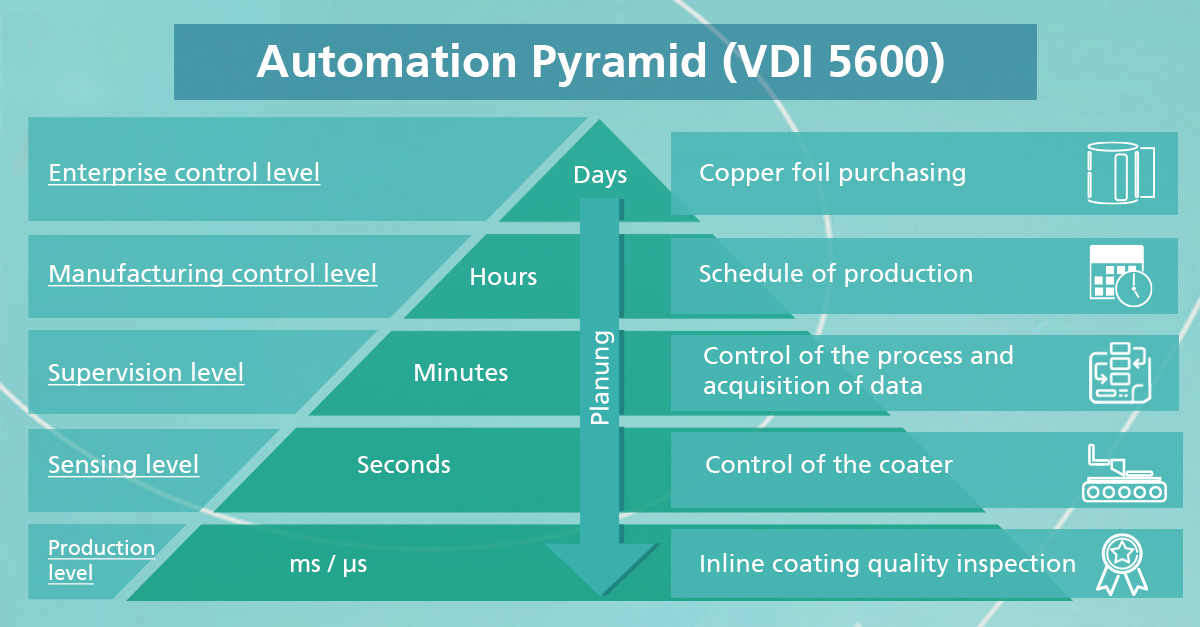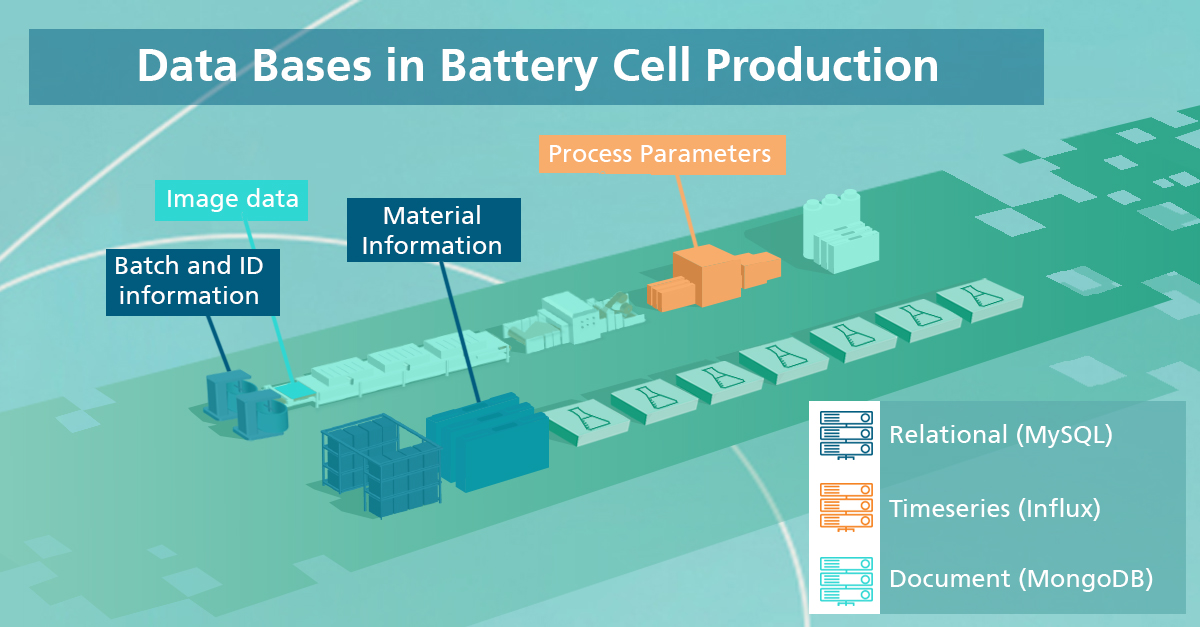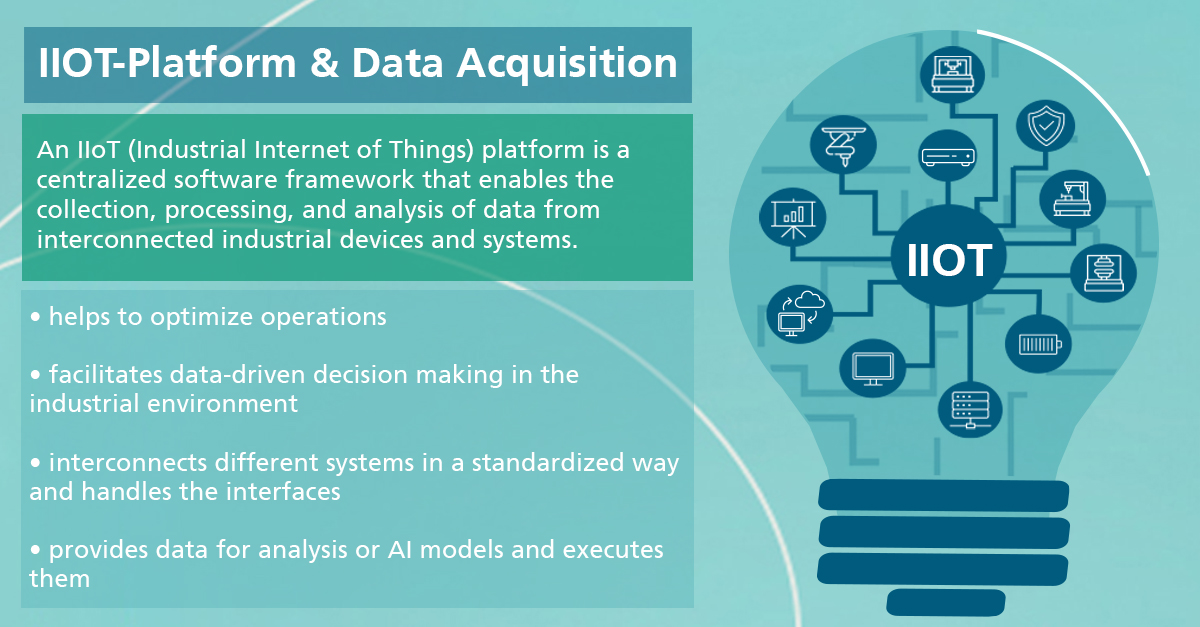The automation pyramid
In companies themselves, IT architectures develop over a long period of time and have also grown historically in some cases. Accordingly, the full potential of the architectures is rarely utilized, resulting in complex development processes during ongoing operations and inefficient production. An "automation pyramid" can be used to control and manage the various IT levels of industrial production. It defines how systems interact with each other across layers and how a software architecture can be designed. In short, it describes the structure of automated production.
The top level is the »corporate level«. This is where cross-divisional orders and purchases for the company come together - IT systems can, for example, send the data of incoming customer orders and issue instructions to the purchasing department for the purchase of copper foil. This ensures that new foil is available on time for further production. This level is traditionally located in administration systems such as SAP. The "operations management level" below this is used to refine production, including quality management, data acquisition and the specific schedule to produce the battery cell. In the next step, the initiated processes are checked and monitored again at the "process control level" before, for example, the coating system is controlled in seconds at the »control level«. The final stage is the process level. The signals from actuators and sensors, such as the measured values of the coating thickness, are processed here within milliseconds.
In practice, the IT systems execute the requirements at the respective level within a very short time. One disadvantage of the automation pyramid is that each level can only access the information provided by the surrounding levels. A central IIoT platform can help to overcome these limitations of the automation pyramid and network systems across modern factories.



